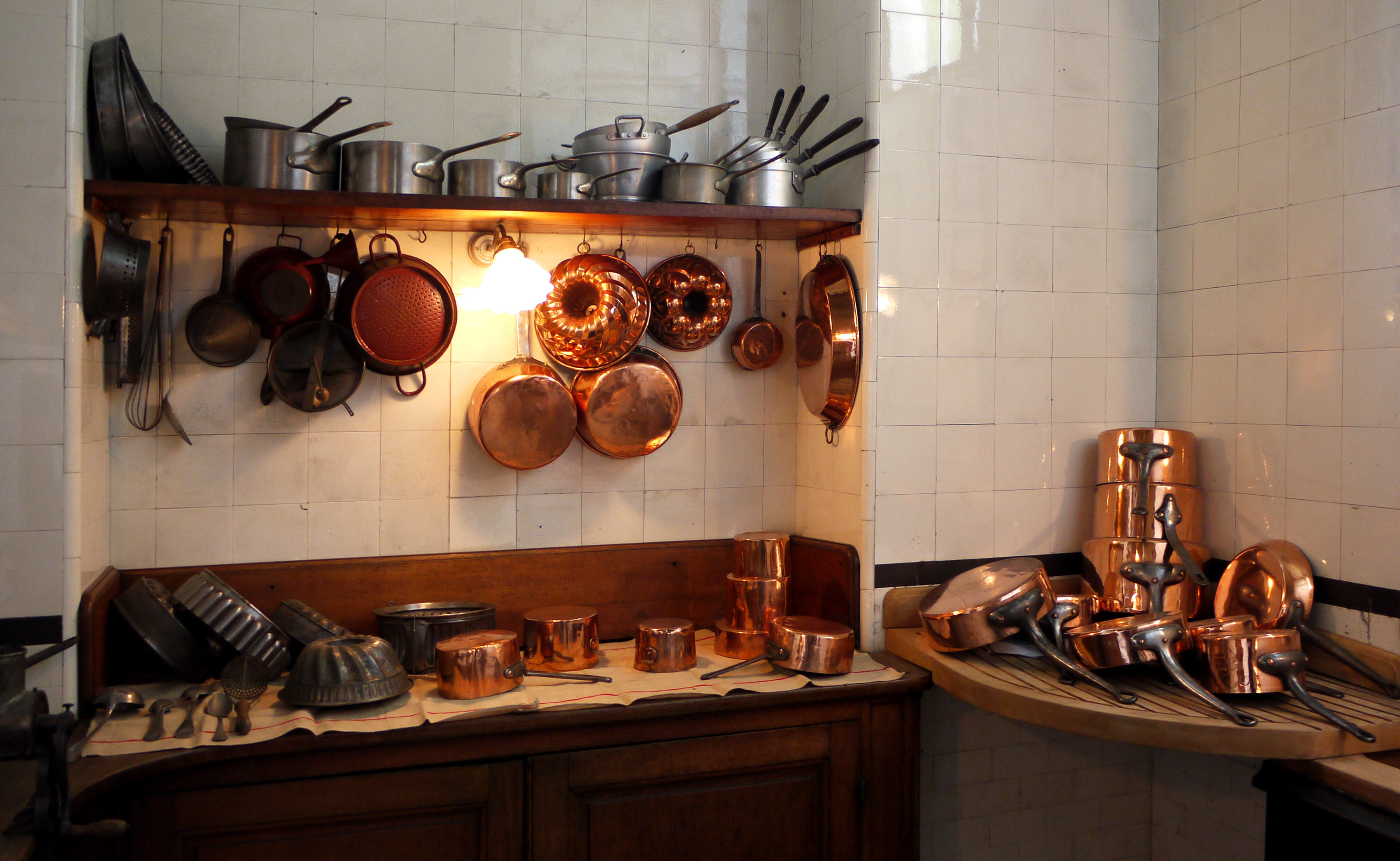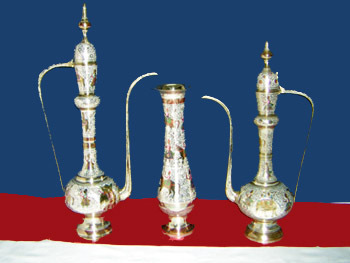|
Brass Street, Karachi
Brass Street, locally known as Peetal Gali, is a street located in Golimar, Karachi, a locality which lies between Nazimabad and Guru Mandir. The street is well-known for finest brass work, utensils and decoration pieces, in Pakistan. History The artisans who work in the Brass Street, Karachi have an emigrant background who migrated from the city of Moradabad, a city known as brass city of India, after the partition of India in 1947. Brass work is on the decline in Pakistan and the businesses which are active on the street now only deal with bulk clients who have export and import business. One reason of the decline of brass work is rising cost of coal which is used in their ovens. Their work has been exhibited in numerous countries including China China, officially the People's Republic of China (PRC), is a country in East Asia. It is the world's most populous country, with a population exceeding 1.4 billion, slightly ahead of India. China spans the equivalent of five t ... [...More Info...] [...Related Items...] OR: [Wikipedia] [Google] [Baidu] |
Golimar, Karachi
Golimar ( ur, گولیمار ) is one of the neighbourhoods of S.I.T.E. Town in Karachi, Sindh, Pakistan. The name of Golimar has been changed to Gulbahar. There are several ethnic groups in Golimar including Muhajirs, Christians, Punjabis, Sindhis, Kashmiris, Seraikis, Pakhtuns, Balochis, Memons, Bohras Ismailis, Chitralis etc. There is also common everyday street crime like most other places in the world, however the law and order situation of the area has been much improved after operations conducted by law enforcement agencies. History Golimar is located along the Lyari River. Golimar area was settled by Muslim refugees after independence of Pakistan in 1947. The name "GOLIMAR" comes from the combination of two words GOLI (bullet) and MAR (fire) as before the independence of Pakistan Golimar are was the shooting range of colonial British Army.(Sibtain NaqviCITIES: A KARACHI BY ANY OTHER NAMEDawn (newspaper), 30 July 2017, Retrieved 19 April 2023 This area was still unp ... [...More Info...] [...Related Items...] OR: [Wikipedia] [Google] [Baidu] |
Nazimabad
Nazimabad ( ur, , sd, نئون ناظم آباد) is a suburb of Karachi, Pakistan. It was established in 1952, and is named after the second Governor General of Pakistan Khawaja Nazimuddin. History Before the independence of Pakistan, the area of the present day Nazimabad was semi-arid land with small Sindhi and Balochi villages nearly 10 KM from downtown Karachi. The Government of Pakistan bought the land in 1950 from the local landlord and tribal leader Masti Brohi Khan in order to resettle the Muslim refugees that were living in tent cities in central Karachi. Nazimabad was planned and developed starting in 1952 and the land was sold at reduced prices to the refugees. This suburb was named after Khawaja Nazimuddin who was the second Governor-General of Pakistan, and later the second Prime Minister as well. In late 1958, the northern area of Nazimabad, was to be developed as Timuria by Karachi Improvement Trust (KIT). The name North Nazimabad became popular and was later ... [...More Info...] [...Related Items...] OR: [Wikipedia] [Google] [Baidu] |
Brass
Brass is an alloy of copper (Cu) and zinc (Zn), in proportions which can be varied to achieve different mechanical, electrical, and chemical properties. It is a substitutional alloy: atoms of the two constituents may replace each other within the same crystal structure. Brass is similar to bronze, another copper alloy, that uses tin instead of zinc. Both bronze and brass may include small proportions of a range of other elements including arsenic (As), lead (Pb), phosphorus (P), aluminium (Al), manganese (Mn), and silicon (Si). Historically, the distinction between the two alloys has been less consistent and clear, and modern practice in museums and archaeology increasingly avoids both terms for historical objects in favor of the more general "copper alloy". Brass has long been a popular material for decoration due to its bright, gold-like appearance; being used for drawer pulls and doorknobs. It has also been widely used to make utensils because of its low melting ... [...More Info...] [...Related Items...] OR: [Wikipedia] [Google] [Baidu] |
Kitchen Utensil
A kitchen utensil is a small hand held tool used for food preparation. Common kitchen tasks include cutting food items to size, heating food on an open fire or on a stove, baking, grinding, mixing, blending, and measuring; different utensils are made for each task. A general purpose utensil such as a chef's knife may be used for a variety of foods; other kitchen utensils are highly specialized and may be used only in connection with preparation of a particular type of food, such as an egg separator or an apple corer. Some specialized utensils are used when an operation is to be repeated many times, or when the cook has limited dexterity or mobility. The number of utensils in a household kitchen varies with time and the style of cooking. A cooking utensil is a utensil for cooking. Utensils may be categorized by use with terms derived from the word "ware": kitchenware, wares for the kitchen; ovenware and bakeware, kitchen utensils that are for use inside ovens and for baking; ... [...More Info...] [...Related Items...] OR: [Wikipedia] [Google] [Baidu] |
Moradabad
Moradabad () is a city, commissionary and municipal corporation in Moradabad district of Indian state of Uttar Pradesh. Moradabad is situated on the banks of the Ramganga river, at a distance of from the national capital, New Delhi and 344 km north-west of the state capital Lucknow. Founded by Rustam Khan, the governor of Katehar under the Mughal emperor Shahjahan, Moradabad is named after prince Murad Bakhsh, the youngest son of the emperor. Soon after its establishment, the city replaced Sambhal as the seat of the governor of Katehar. Moradabad was subsequently annexed into the Kingdom of Rohilkhand by Ali Mohammed Khan in 1740. The city came under the control of Oudh State in 1774 after the fall of Rohillas in the First Rohilla War and was then ceded to the British East India Company by the Nawab of Oudh in 1801. In the early nineteenth century, the Rohilkhand area was divided among the Rampur State and two districts - Bareilly and Moradabad; Moradabad becam ... [...More Info...] [...Related Items...] OR: [Wikipedia] [Google] [Baidu] |
Partition Of India
The Partition of British India in 1947 was the Partition (politics), change of political borders and the division of other assets that accompanied the dissolution of the British Raj in South Asia and the creation of two independent dominions: Dominion of India, India and Dominion of Pakistan, Pakistan. The Dominion of India is today the India, Republic of India, and the Dominion of Pakistan—which at the time comprised two regions lying on either side of India—is now the Pakistan, Islamic Republic of Pakistan and the Bangladesh, People's Republic of Bangladesh. The partition was outlined in the Indian Independence Act 1947. The change of political borders notably included the division of two provinces of British India, Bengal Presidency, Bengal and Punjab Province (British India), Punjab. The majority Muslim districts in these provinces were awarded to Pakistan and the majority non-Muslim to India. The other assets that were divided included the British Indian Army, ... [...More Info...] [...Related Items...] OR: [Wikipedia] [Google] [Baidu] |
China
China, officially the People's Republic of China (PRC), is a country in East Asia. It is the world's most populous country, with a population exceeding 1.4 billion, slightly ahead of India. China spans the equivalent of five time zones and borders fourteen countries by land, the most of any country in the world, tied with Russia. Covering an area of approximately , it is the world's third largest country by total land area. The country consists of 22 provinces, five autonomous regions, four municipalities, and two Special Administrative Regions (Hong Kong and Macau). The national capital is Beijing, and the most populous city and financial center is Shanghai. Modern Chinese trace their origins to a cradle of civilization in the fertile basin of the Yellow River in the North China Plain. The semi-legendary Xia dynasty in the 21st century BCE and the well-attested Shang and Zhou dynasties developed a bureaucratic political system to serve hereditary monarchies, or dyna ... [...More Info...] [...Related Items...] OR: [Wikipedia] [Google] [Baidu] |



